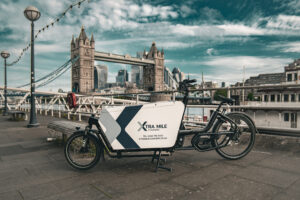At Xtra Mile Couriers, customers often ask,What should I pack first for courier service? Packing correctly ensures that parcels arrive safely and securely at their destination. Choosing the right items to pack first makes the process easier, helping to avoid damage, delays, or unnecessary hassle.
Packing in the correct order helps maintain balance in the box, protects fragile items, and prevents shifting during transit. A well-packed parcel also ensures that nothing gets crushed or damaged along the way. Organising everything before packing saves time and makes sending items through a courier service stress-free.
Understanding which items to pack first improves efficiency and keeps shipments safe. Let’s explore the best way to pack your parcels for courier service.
Choosing the right packing materials
Packing materials play a crucial role in protecting items during transit. Choosing strong boxes, bubble wrap, packing peanuts, and sturdy tape ensures that everything stays secure. Using low-quality materials increases the risk of damage.
Selecting the right box size prevents movement inside the package. A box that is too big leaves too much empty space, while a small box may not fit all items properly. High-quality materials provide extra protection and help avoid breakages.
Organising items before packing
Sorting items before packing makes the process smoother. Grouping similar items together helps determine the best way to arrange them inside the box. Keeping fragile and heavy items separate prevents accidental damage.
Placing small accessories in bags or wrapping them individually prevents them from getting lost. Organising everything before starting ensures that the packing process remains efficient and hassle-free.

Packing heavy items first
Heavy items should always go in first. Placing them at the bottom of the box provides a stable base and prevents lighter items from being crushed. This method keeps the package balanced and makes handling easier.
Ensuring that weight is evenly distributed reduces the risk of the box tipping over. Heavy objects should be wrapped properly to avoid damage to other items in the package. Careful positioning improves safety during transportation.
Wrapping fragile items carefully
Fragile items require extra protection before being placed inside the box. Wrapping them individually in bubble wrap or soft materials prevents breakage. Double-layered wrapping offers even more security.
Using packing peanuts or crumpled paper around fragile items absorbs shocks. Placing them in the centre of the box with padding on all sides prevents them from moving. Careful wrapping ensures that delicate items remain intact.
Filling empty spaces inside the box
Leaving empty spaces inside the box increases the risk of items shifting. Filling these gaps with soft materials such as bubble wrap, crumpled paper, or foam inserts keeps everything in place. Proper filling prevents damage during handling and transit.
Using too much filler material may increase the package’s weight unnecessarily. A balance between protection and weight helps keep shipping costs reasonable. Well-filled boxes ensure safe delivery.
Sealing liquid containers securely
Liquids must be packed carefully to avoid leaks. Sealing bottles with tape and placing them inside waterproof bags prevents spills. Using absorbent materials like paper towels around containers adds extra protection.
Packing liquids in upright positions reduces the risk of leaks. Placing them inside a sturdy box with padding ensures that other items remain unaffected. Proper sealing keeps parcels dry and prevents messes during transit.
Securing electronic devices properly
Electronic devices need careful packing to prevent internal and external damage. Wrapping them in anti-static bags protects sensitive components. Using bubble wrap or foam inserts provides cushioning against impacts.
Placing devices in their original packaging, if available, offers extra protection. Positioning electronics in the centre of the box with padding on all sides minimises movement. A well-packed device ensures safe transportation.
Packing clothing and soft items smartly
Clothing and soft items are easy to pack but still require proper handling. Rolling clothes instead of folding them saves space and reduces wrinkles. Placing them in vacuum-sealed bags keeps them compact.
Using clothing to fill gaps in the box adds extra cushioning for delicate items. Soft materials can act as padding, preventing movement. Packing efficiently saves space and keeps everything secure.
Labelling fragile parcels properly
Labelling fragile parcels clearly informs couriers to handle them with care. Marking boxes with “Fragile” or “Handle with Care” ensures extra attention during transport. Using bright-coloured labels makes them more noticeable.
Even with labels, proper packing remains essential. Adding padding and securing fragile items inside the box prevents damage. Couriers appreciate clear labels, as they help them transport parcels safely.
Securing important documents safely
Important documents need to be packed carefully to avoid creases or damage. Placing them inside waterproof folders protects them from spills. Using rigid cardboard envelopes prevents bending.
Labelling the envelope with “Do Not Bend” ensures careful handling. Positioning documents in the centre of the box adds another layer of protection. Keeping them secure prevents potential loss or damage.
Keeping valuables safe during transit
Valuables such as jewellery, watches, or expensive gadgets require extra precautions. Packing them inside padded boxes or jewellery cases prevents scratches. Wrapping them in soft cloths or bubble wrap adds another layer of safety.
Using tamper-proof seals or locking small valuables inside protective cases enhances security. Tracking high-value shipments provides peace of mind. Ensuring safe packing reduces the risk of loss or damage.
Using strong adhesive tape for sealing
Properly sealing the box prevents items from falling out. Using high-quality adhesive tape strengthens the package. Applying tape to all edges and seams adds security.
Double-sealing the bottom of the box prevents it from opening accidentally. Using waterproof tape protects against moisture. A well-sealed package ensures a safe journey.
Choosing the right box for shipping
Selecting the right box size and type helps ensure secure transport. Double-walled cardboard boxes provide extra strength. Reinforced corners reduce the risk of crushing.
Picking a box slightly larger than the items allows space for padding. Ensuring the box is not too big prevents unnecessary shifting. A strong box keeps items safe throughout the journey.

Checking package weight limits
Every courier service has weight limits for shipments. Checking weight restrictions before packing helps avoid extra charges. Weighing the package ensures it meets guidelines.
Distributing weight evenly prevents handling issues. Avoiding overloaded boxes reduces the risk of damage. Following weight limits ensures a smooth delivery process.
Attaching a clear shipping label
A clear shipping label helps ensure accurate delivery. Writing the recipient’s details in bold letters prevents confusion. Attaching the label on a flat surface keeps it readable.
Including a return address helps in case of misdelivery. Using waterproof labels prevents smudging. A well-labelled parcel ensures timely arrival.
Checking package stability before sending
Before sending a parcel, checking its stability ensures a smooth journey. Gently shaking the box tests whether items move inside. If shifting occurs, adding extra padding improves security.
Pressing the sides of the box helps confirm its strength. Ensuring everything is tightly packed prevents accidents. A stable package reduces the risk of damage.
Double-checking everything before dispatch
Reviewing the package before sending ensures nothing is forgotten. Confirming that fragile items are properly secured adds extra peace of mind. Making sure all labels are attached avoids delivery issues.
Checking for proper sealing prevents accidental openings. Verifying the recipient’s details ensures smooth delivery. A final review guarantees a secure and successful shipment.
Conclusion
At Xtra Mile Couriers, we guide customers on What should I pack first for courier service. Packing in the right order improves safety, ensures efficiency, and protects valuable items. By following the best packing practices, customers can send parcels with confidence.
Heavy items should go in first, fragile items must have extra protection, and gaps should be filled to prevent movement. Using high-quality materials and proper labelling ensures that parcels arrive in perfect condition. Trust Xtra Mile Couriers to handle shipments with care and professionalism.
Experience the Best with Xtra Mile Couriers